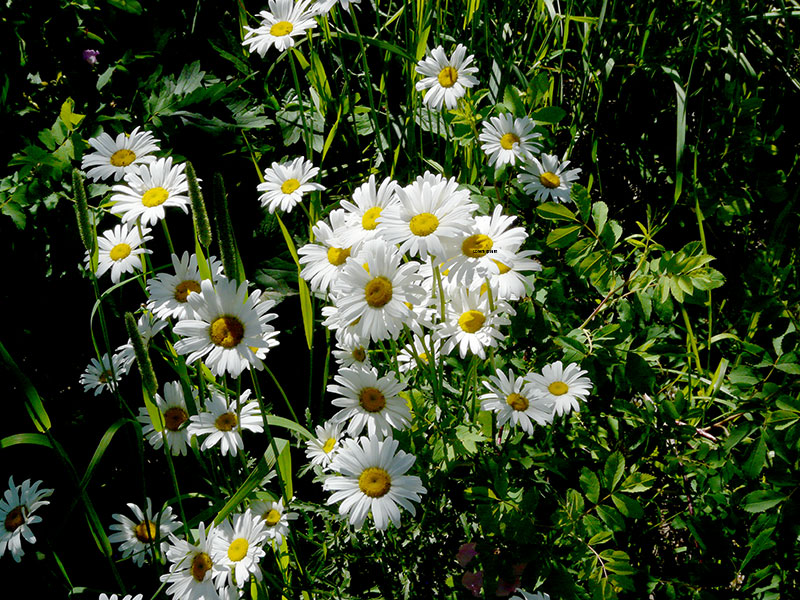Leucanthemum vulgare / oxeye daisy
- bright, white “petals”, 2-3″ across; yellow centers
- s/he loves me, s/he loves me not
- glossy green, spoon-shaped leaves in a 2 foot dome
- may form large colonies
- potentially wide spread
Also known as: dog daisy, field daisy, Marguerite, moon daisy, moon-penny, poor-land penny, poverty daisy, white daisy
Synonym: Chrysanthemum leucanthemum
Two (un)important things to start with here, only one of which could help identify this plant. First, the oxeye daisy used to be known as Chrysanthemum leucanthemum until the systematists revisited the Asteraceae. Too bad, it had such a ring to it. It came off the tongue so nicely. At this point, we need to make sure the systematists don’t go examining Amelia Bedelia and change her name, too… Bedelia vulgare just doesn’t work.
Second, before it became a noxious weed, this species was most important as an aid to discovering whether s/he loves me or loves me not. The fact that the number of “petals” is not fixed made the whole process that much more exciting.
Beyond that… the oxeye daisy is the quintessential daisy… bright white ray flowers (in the 20s usually) with a bright yellow button of disk flowers. The whole inflorescence is 2-3″ across and stands up to a couple feet tall and a single plant can have many flowering stems… like up to 40. It blooms in late spring to mid summer, often in degraded pastures and along roadsides, but otherwise in a variety of plant communities… meadows, forest openings, disturbed areas.
Typically, daisy seeds germinate in the fall and overwinter as small plants, then put on rhizomes and roots, finally blooming later in their second year. From seed, the plants initially develop as a basal rosette of leaves, but they aren’t flat against the ground, instead forming hemispheric clumps up to 2 feet across and tall. The leaves are glossy and dark green, about 4″ long, shallowly but coarsely toothed or more deeply lobed… sometimes described as “spoon shaped”.
Oxeye daisy can form dense colonies, displacing native plants (which is one strike against it). It is not palatable for cattle and they don’t eat it (a second strike), although sheep, goats and horses are less picky. Unfortunately, this lets it spread further via its shallow creeping rhizomes. Control is hard because fragmentation also leads to spreading and it is prolific and fertile seeder (strike three). Idaho considers it a noxious weed. The state loves it not.
Typically, in its native Europe and Western Asia, oxeye daisy lives in areas with about 50% more rain than we get in the Valley, and on heavy, damp soils. This could restrict it, here, to wetter areas on the Valley floor, but as with many plants, it seems to actually be tolerant of a much wider set of conditions. Indeed, one might just as well say it grows in “soil”… any kind.
| Color | |
|---|---|
| Family | |
| Blossom size | |
| Inflorescence size | |
| Inflorescence type | |
| When? | |
| Where? |
